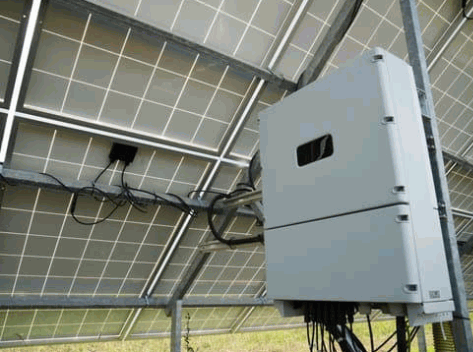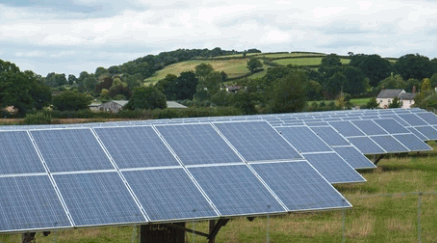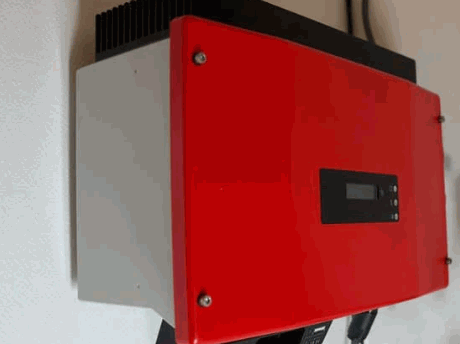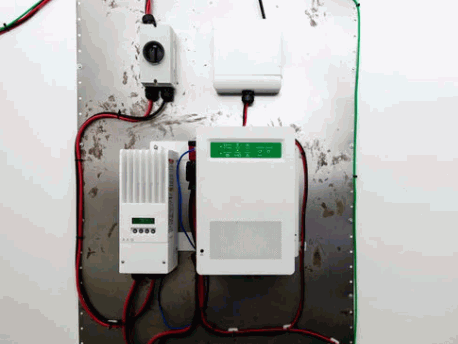Are you thinking of investing in solar panels and need some friendly advice?
It's no great surprise - the subject of solar panels and renewable energy has become very complex and confusing. While it's excellent news that green technology has evolved and is rapidly improving the efficiency and lifespan of solar power products, it's becoming increasingly difficult for the consumer to choose the best system to suit their needs.
At Skylamp Solar, we have learned that one particular component people often need help with is the solar inverter, as there are many different types and sizes. If you need advice on finding the right size solar inverter for your system's solar panels, this is the place to be.
We've included some other helpful information that should give you a better idea of what it's all about, starting with some basic stuff about inverters in general
But we'll begin by saying that if you are buying a complete solar PV system for the first time, a competent, professional solar installation company will include the correct size solar inverter (although it's wise to be aware of the facts so that you can spot any questionable activity!). If you inherited the system when you moved in, or your inverter needs replacing for whatever reason, then the following information will guide you.
An inverter is essential to all solar PV (photovoltaic) panel systems. It's the heart of the entire system, connecting your solar panels to your home and the national grid. Without this component, your solar panels would be a pile of useless plastic, metal and glass!
What makes them so important? Here are a few of the roles that solar inverters play in the running of your solar panel system:
Of these, the main two jobs are to convert DC to AC and make sure the system runs at maximum power output.
Many models these days have an internet connection and are tied to an app to help you monitor your solar panel system and energy consumption more closely.

As you've probably guessed, solar inverter sizing isn't about the physical dimensions. What we really mean is the capacity in kilowatts, just like your solar panels.
There's a bewildering range of solar inverters out there, but most of them are built with similar key characteristics:
So, how do you know which inverter capacity is right for your solar system?
To find the right size solar inverter, we need to look at the following factors:
This is probably the most important aspect when choosing the right size solar inverter, as the general rule is to go for one that roughly matches the DC rating of your solar array in watts (or kilowatts).
For example, if you have a 4kW solar panel array, your proposed inverter capacity should be around 4000w. The main thing is to keep in mind that your inverter has to be able to handle all the power that the solar panel array produces.
However, it's not as simple as this and we'll need to check a few other details.

We also need to take into account the energy yields required to power the appliances in your home or business. And while this would have been explored when choosing your solar panel capacity, it's helpful to understand how this AC output will be used.
Don't forget, the inverter will determine the AC power that's sent through to the appliances, and this will have been converted from DC power generated by the solar panel array. You'll see why this is important further along.
This includes things like the tilt or angle of the roof, the amount of shading and the orientation of the panels. Ideally, your solar array should be installed on a south-facing roof, but they can still deliver when placed on an east or west-facing slope. Even a northerly slope would work, although with reduced efficiency.
The geography of your property will affect the maximum power output of your solar energy system, as the amount of sunlight differs according to where you are in the country.
Admittedly, this isn't a major issue, as most good-quality solar systems work efficiently whether they're in Scotland or on the south coast. Any difference in the amount of electricity generated would be fairly minimal as it's all about solar radiation (daylight) rather than sunny days.
Even so, when combined with other factors, it can make a difference and has to be considered.
This figure compares your solar array relative to the inverter capacity to find the best match.
You can calculate this by dividing the nominal DC rating of your solar array by the maximum AC output of your inverter.
AC electricity differs depending on whether it's in the home or a business. Residential properties in the UK are generally supplied with single-phase 230v AC power, while industrial properties often have three-phase power (greater power density at the same amperage) from the electric grid. This makes a difference in the type and size of the inverter.
Quite simply, it's because inverter size directly affects solar panel efficiency!
Many solar panel installers recommend that you have an undersized inverter, i.e. one that has a slightly lower capacity than your panels. This means that your maximum power output will be dictated by the inverter capacity rather than your solar panel capacity.
But why would this be a good thing? Remember the section above that mentioned the orientation and location of your solar panels? Well, if the installer suspects that your property will experience a low level of incident solar irradiation (most people know this as sunlight!).
This means that your solar system won't be operating at its rated maximum efficiency for extended periods throughout the day. As a result, it won't reach the initial input voltage or maximum power output voltage as frequently as it might.
By using a lower capacity, you will ensure even, consistent and efficient energy production all day. However, while inverter manufacturers design them to handle lower power inputs, it's best not to go much lower than the nominal capacity listed. Remember, your solar inverter will dictate the maximum power output, not your solar panels! Flooding it with DC electricity will eventually damage the capacitors and you'll need to replace your inverter much sooner.

Also, solar system designers typically use figures obtained in laboratory conditions. This means that solar systems rarely reach peak performance as listed in the product specifications. For example, the datasheet might state that the maximum output of the panels is 4kW at a constant temperature of 25ºc. However, solar cells become less efficient as the panels get hotter, so you're unlikely to reach or exceed the inverter's rated capacity on exceptionally sunny days.
While it's possible to have an oversized solar inverter, it's rarely recommended unless you are planning to upgrade your solar array in the near future and add more panels. Solar inverters work best when they're at or close to maximum capacity. Installing one that exceeds the array-to-inverter ratio will eventually compromise the unit's efficiency.
So far, we've assumed that you'll be investing in a solar system with a string inverter, as these are the most widely used units.
String inverters are those that connect a whole solar array, consisting of up to fourteen panels. Each one is joined together, sending the DC electricity through to the inverter as if it were from a single panel.
These are the cheapest option and they are pretty efficient (provided you pick a good brand). Even so, they have an in-built disadvantage: maximum DC output is capped by the lowest-performing panel, meaning that overall electricity production will be limited. So, if one of your panels is partially shaded or is underperforming in any way, it will affect the efficiency of the entire solar array.
This shouldn't be an issue if your solar panels are all facing the same direction and aren't affected by shading.
Micro-inverters, on the other hand, bypass this problem as each solar panel has its own mini inverter. If a single panel is affected by shading or any other problem, the system isn't affected as a whole as each inverter operates independently.
String inverters typically cost between £500 and £1000, while micro-inverters cost around £100-£150 per unit, bearing in mind that you need one for each solar panel.
It's worth noting that a micro-inverter will boost efficiency
These act a little like micro-inverters as they can be added to individual solar panels to boost output, particularly if they are often in shade. It's a great way of saving money as you don't need one on every panel.
These are a new development, combining the 'traditional' inverter with a charge controller and battery manager. They are designed to monitor your system and make adjustments accordingly. For example, if your battery is low, a hybrid inverter will draw energy from your supplier to power your home or business. Likewise, if the electricity generated by your solar panels isn't enough, they will switch to the grid power or your battery. They can also send excess energy to the grid when necessary.
The main drawback with this type is the cost: they are around 50% more than a standard inverter.

This is common when a customer has a smaller inverter and wants to expand the system. Rather than buy a bigger unit, it's often possible to add another small inverter or multiple inverters to save money.
As you see, it's not a simple case of saying, my solar panel array is 6kW so I need a 6000w solar inverter.
But, frustratingly, it can often be the case that this turns out to be precisely what's needed! The key to finding the right size is to look at all of the factors that might affect performance and efficiency. To do otherwise would risk damaging your system and shortening its lifespan. And this is too big an investment to take such rash action.
While it's entirely possible for anyone to work out what size inverter they need, there's no shame in seeking help: this can be a minefield of confusing information, and you'll often find conflicting opinions - particularly if you check out websites from overseas where solar panels may be configured differently due to environmental conditions.
All of the information here on this page is generally geared towards UK customers and is widely accepted by professional solar installation companies across the country. However, it doesn't necessarily answer the question the way you'd like. What you really need is for someone to say, you have a solar panel array that's this big? Then you need an inverter of this size!
Having read this far, if you still need a helping hand, then contact Skylamp Solar and we'll assist you in finding the perfect solar inverter for your system. Dedication to our customers (or prospective customers) is hugely important to us, so call us about solar inverter sizing or anything else solar panel related and we will do our utmost to guide you in the right direction.